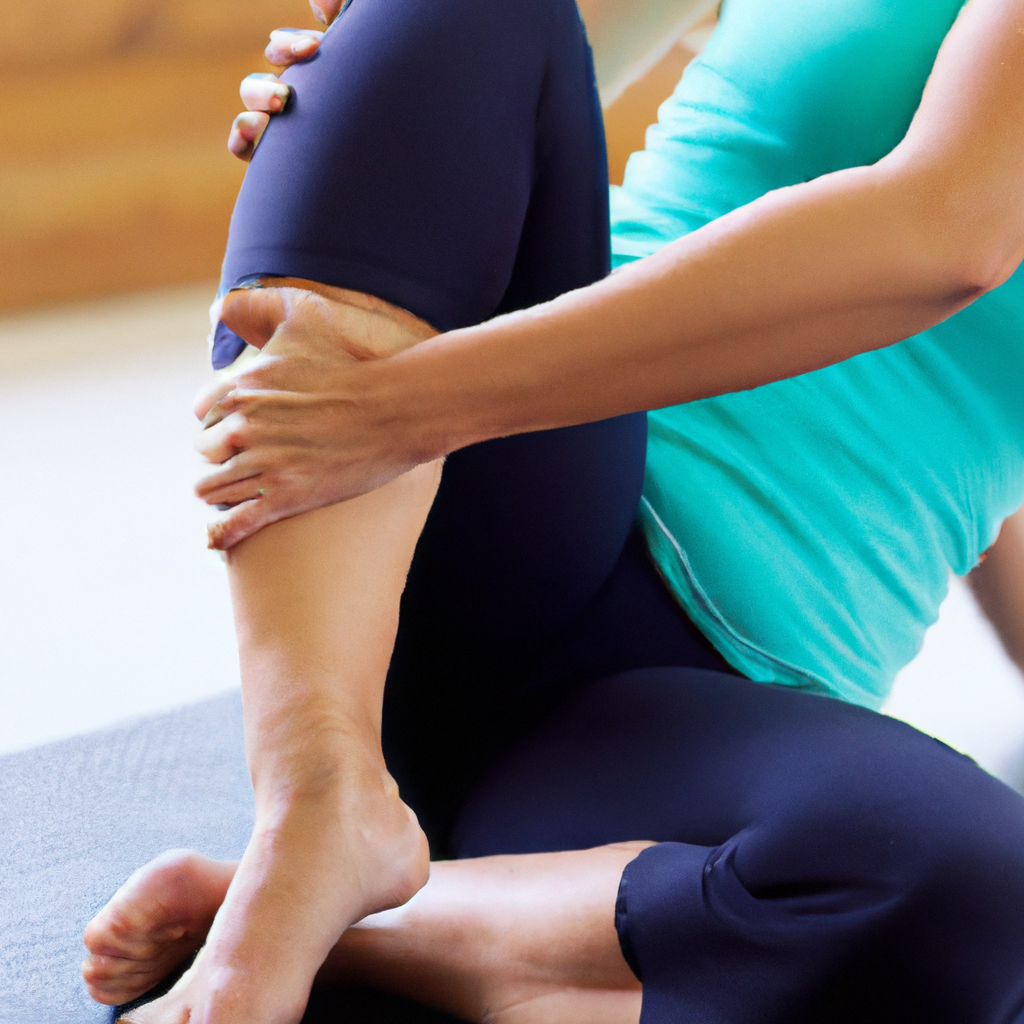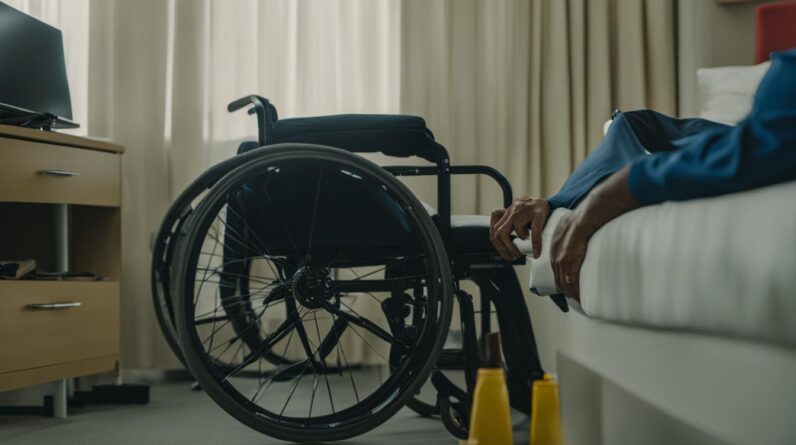Having to deal with the pain and discomfort of sciatica can be incredibly frustrating. But what if there was a way to alleviate the symptoms right from the comfort of your own home? In this article, you will discover some simple and effective methods to treat sciatica at home. Whether you’re looking for gentle exercises or natural remedies, we’ve got you covered. Say goodbye to the agony of sciatica and hello to a pain-free lifestyle.
1. Stretching Exercises
1.1 Hamstring Stretch
Stretching your hamstrings can help relieve sciatica pain by reducing tension in the muscles that surround the sciatic nerve. To perform a hamstring stretch, sit on the edge of a chair with one leg extended straight in front of you. Keeping your back straight, lean forward from your hips until you feel a gentle stretch in the back of your thigh. Hold the stretch for 30 seconds and then switch legs. Repeat this stretch 3-5 times on each leg.
1.2 Piriformis Stretch
The piriformis muscle, located in the buttocks, can sometimes irritate the sciatic nerve, leading to sciatica pain. To stretch the piriformis muscle, lie on your back with your knees bent and feet flat on the floor. Cross one ankle over the opposite knee, and gently pull the crossed leg towards your chest until you feel a stretch in your hip and buttocks. Hold for 30 seconds, and then switch legs. Repeat this stretch 3-5 times on each side.
1.3 Knee to Chest Stretch
The knee to chest stretch is another effective exercise for relieving sciatica pain. Lie on your back with your legs extended. Slowly bring one knee towards your chest, using your hands to pull it as close as possible. Hold the stretch for 30 seconds, and then slowly lower your leg back to the starting position. Repeat on the other side. Aim to perform this stretch 3-5 times on each leg.
2. Ice and Heat Therapy
2.1 Applying Ice Packs
Ice packs can help reduce inflammation and numb the affected area, providing temporary relief from sciatica pain. To use ice therapy, wrap an ice pack or a bag of frozen peas in a thin towel and apply it to the painful area for 15-20 minutes. Repeat this every 2-3 hours as needed. It’s important to never apply ice directly to the skin, as it can cause frostbite.
2.2 Using Heat Packs
Applying heat packs can help relax the muscles and increase blood flow to the affected area, providing relief from sciatica pain. Use a hot water bottle, heating pad, or warm towel and place it on the painful area for 15-20 minutes. Make sure to use a fabric barrier to protect your skin from burns. Repeat this several times throughout the day as needed.

3. Over-the-Counter Pain Medications
3.1 Nonsteroidal Anti-Inflammatory Drugs (NSAIDs)
Nonsteroidal anti-inflammatory drugs, such as ibuprofen and naproxen, can help reduce inflammation and relieve pain associated with sciatica. Follow the recommended dosage on the packaging and consult with your doctor if you have any underlying health conditions or are taking other medications.
3.2 Acetaminophen
Acetaminophen is a pain reliever that can be effective in managing mild to moderate sciatica pain. It does not have anti-inflammatory properties like NSAIDs, but it can still provide relief. Follow the dosage instructions on the packaging and consult with your doctor if you have any liver problems or are taking other medications containing acetaminophen.
4. Topical Pain Relief
4.1 Menthol or Capsaicin Creams
Topical creams or ointments containing menthol or capsaicin can provide temporary relief from sciatica pain. These ingredients work by numbing the area or reducing pain signals. Apply a small amount of cream to the affected area and gently massage it in. Be cautious and avoid getting the cream near your eyes or applying it to broken skin. Wash your hands thoroughly after applying the cream.

5. Massage Therapy
5.1 Self-Massage Techniques
Performing self-massage techniques on the affected area can help release tension and reduce muscle spasms that may be contributing to sciatica pain. Use your fingertips, knuckles, or a massage ball to apply gentle pressure and knead the muscles surrounding the sciatic nerve. Move in circular motions or along the length of the muscle. Take deep breaths and focus on relaxing as you massage.
5.2 Professional Massage
Consider seeking the help of a professional massage therapist who is experienced in treating sciatica. They can target specific areas of tension and help improve blood circulation, reduce muscle tightness, and alleviate pain. Communicate your symptoms and concerns during the massage so they can tailor the session to your needs.
6. Acupuncture
6.1 Acupuncture Points for Sciatica
Acupuncture is an ancient Chinese therapy that involves inserting thin needles into specific points on the body. According to traditional Chinese medicine, there are acupuncture points that can help alleviate sciatica pain. Common points for sciatica treatment include the back, buttocks, legs, and feet. The stimulation of these points is believed to help restore the flow of energy and reduce pain.
6.2 Finding a Licensed Acupuncturist
If you are considering acupuncture for treating sciatica, it is important to find a licensed and experienced acupuncturist. Research and seek recommendations from trusted sources or ask your healthcare provider for a referral. During your first visit, the acupuncturist will assess your condition and create a treatment plan tailored to your specific needs.
7. Yoga and Pilates
7.1 Sciatica-Specific Yoga Poses
Certain yoga poses can help stretch and strengthen the muscles that surround the sciatic nerve, providing relief from sciatica pain. Poses such as the lying down hamstring stretch, seated forward fold, and pigeon pose can target the lower back, hips, and hamstrings. It’s important to practice these poses under the guidance of a qualified yoga instructor who can ensure proper alignment and modifications if needed.
7.2 Pilates for Core Strength
Pilates exercises can help improve core strength and stability, which is crucial for supporting the spine and preventing further sciatica pain. Pilates movements such as the pelvic tilt, bridging, and single-leg stretch can target the deep abdominal and back muscles. Consider taking a Pilates class or working with a certified instructor who can guide you through the exercises safely.
8. Pilates for Core Strength
8.1 Stabilization Exercises
Stabilization exercises focus on activating and strengthening the deep abdominal and back muscles, which help support the spine and alleviate sciatica pain. Exercises such as the plank, bird dog, and dead bug can improve core stability. Start with proper form and gradually increase the duration and intensity of the exercises as you build strength and endurance.
8.2 Strengthening Exercises
Strengthening exercises target the larger muscles surrounding the sciatic nerve, such as the glutes and hamstrings. Exercises like squats, lunges, and deadlifts can help build strength in these muscles while promoting proper alignment and reducing strain on the sciatic nerve. It is important to perform these exercises with correct form and start with lighter weights before progressing to heavier ones.
9. Ergonomic Adjustments
9.1 Proper Sitting and Standing Posture
Maintaining proper posture is essential for preventing and managing sciatica pain. When sitting, ensure that your feet are flat on the floor, your back is straight, and your shoulders are relaxed. Use a chair with good lumbar support or consider using a lumbar cushion. When standing, distribute your body weight evenly between both feet and avoid slouching or leaning to one side.
9.2 Supportive Chairs and Cushions
Investing in a supportive chair or cushion can help reduce pressure on the lower back and provide relief from sciatica pain. Look for chairs with adjustable features, such as lumbar support and seat height, to cater to your specific needs. Additionally, using a cushion or pillow that offers support and promotes proper alignment can help relieve pressure and discomfort while sitting.
10. Lifestyle Modifications
10.1 Regular Exercise Routine
Engaging in regular exercise is crucial for overall health and can help manage sciatica pain. Low-impact exercises such as walking, swimming, and cycling can improve flexibility, strengthen the muscles, and promote circulation. Start with gentle exercises and gradually increase the intensity and duration as tolerated. Consult with your healthcare provider before starting any new exercise routine.
10.2 Weight Management
Maintaining a healthy weight can alleviate pressure on the spine and reduce the severity of sciatica pain. Excess weight can contribute to increased strain on the lower back and exacerbate sciatic nerve irritation. Follow a balanced diet and incorporate regular exercise to achieve and maintain a healthy weight. Seek guidance from a healthcare professional or registered dietitian for personalized advice.
By incorporating these home treatment options into your routine, you can effectively manage and alleviate sciatica pain. However, it is important to consult with your healthcare provider if your symptoms persist or worsen. They can provide further guidance and recommend additional treatment options specific to your condition. Remember to listen to your body, take breaks when necessary, and prioritize self-care. With patience and consistency, you can find relief from sciatica and improve your overall well-being.






